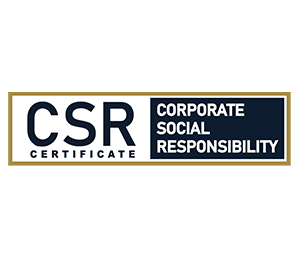In 2024, Louis Thai International made a bold step towards sustainability by cutting 88.3% of paper usage across invoices, receipts, credit notes, and other documentation. This transition is more than an operational shift; it reflects our responsibility to the environment.
By embracing a paperless approach, we not only reduce landfill waste and emissions but also lower our energy use from printing and materials. Our target is clear: achieve zero paper usage by 2027 under the “Go Green” campaign.
The results are visible. Paper costs dropped from 410.65 MYR in 2022 to 156.20 MYR in 2024, proving that sustainability also means efficiency. Each small change contributes to a greater impact, aligning our business with eco-friendly values.
Louis Thai continues to partner with green suppliers, ensuring that our growth does not come at the expense of the planet. This is our promise: a cleaner, greener, and more responsible future.
10 years monitor simulator of LOUIS THAI in future 10 years Go-Green Plans
Estimated Savings from Paperless Transition
| Year | Projected Cost (MYR) | Annual Saving (MYR) | Cumulative Saving (MYR) |
|---|---|---|---|
| Total | – | – | – |
In this projection model, paper costs are assumed to decline at a Compound Annual Growth Rate (CAGR) of −25% over a 10-year horizon. CAGR reflects an average annual rate of change, smoothing out fluctuations to show what the trend would look like if the cost decreased at a constant pace each year. Starting from the 2022 baseline, a −25% annual reduction results in a sharp downward curve, with costs progressively shrinking toward zero by the end of the decade. This projection highlights the significant efficiency gains achievable through sustained reduction efforts. It demonstrates how consistent application of the Go Green strategy can transform operational spending while aligning with broader sustainability goals. By quantifying the potential scale of savings across ten years, this scenario provides management and stakeholders with a clear long-term outlook, reinforcing the financial and environmental value of the transition to paperless operations.
Paperless & Warranty — Critical Thinking & Enrichment
Hidden risks/unintended consequences of going fully paperless by 2027
Show suggested points (reference)
- Regulatory/Legal: industries requiring wet-ink originals; audit trails; PDPA/retention schedules; e-signature standards; cross-border data residency.
- Cultural/Behavioral: staff/client resistance; accessibility; training load; stakeholder trust in digital records.
- Operational/Technical: single-point failure (SaaS outage); ransomware; backup/DR gaps; long-term readability/format obsolescence; device security.
- Mitigations & KPIs: e-signature policy & vendor due diligence; dual-region backups (RPO/RTO targets); quarterly restore drills; DLP & access reviews; % digital-only workflows; exception rate; audit non-conformance trend.
- Equity & Inclusion: fallback channels for low-digital-literacy users; multilingual user education.
Find a global near-paperless case and compare with Louis Thai
Show suggested points (reference)
- Strategy: “digital-by-default” with limited paper exceptions; documented retention & destruction policy.
- Governance: exec sponsor; data steward roles; quarterly compliance reviews; DPIA for new systems.
- Tech stack: e-sign (e.g., DocuSign/Adobe), secure content services, MDM, backup to immutable storage.
- Change management: role-based training; champions network; incentives; phased rollout; A/B of form UX.
- Outcomes: % paper reduction, cycle-time cut, error rate ↓, audit findings ↓; user satisfaction; cost per transaction ↓.
- Lessons for Louis Thai: define exception matrix; publish KPI dashboard; run quarterly restore tests.










 and then
and then